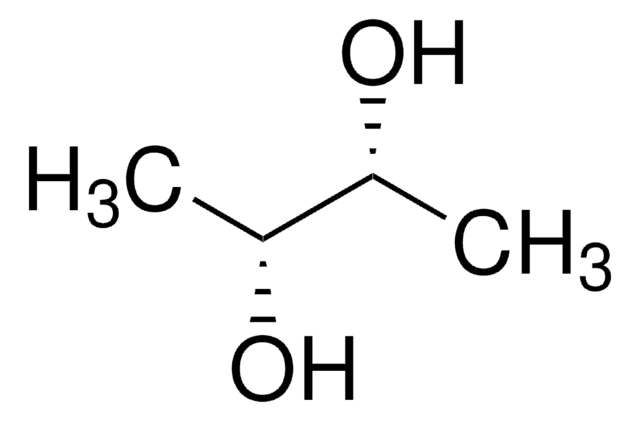375721
2-Methyl-1,3-propanediol
99%
Synonyme(s) :
1,3-Dihydroxy-2-methylpropane, 2-Methylpropan-1,3-diol, Methylpropanediol
About This Item
Produits recommandés
Densité de vapeur
3.2 (vs air)
Pureté
99%
Forme
liquid
Indice de réfraction
n20/D 1.445 (lit.)
Point d'ébullition
123-125 °C/20 mmHg (lit.)
Pf
−91 °C (lit.)
Densité
1.015 g/mL at 25 °C (lit.)
Chaîne SMILES
CC(CO)CO
InChI
1S/C4H10O2/c1-4(2-5)3-6/h4-6H,2-3H2,1H3
Clé InChI
QWGRWMMWNDWRQN-UHFFFAOYSA-N
Vous recherchez des produits similaires ? Visite Guide de comparaison des produits
Description générale
Application
- In the preparation of solid polymer electrolytes for lithium metal batteries.
- To obtain methyl methacrylate (precursor for polymethyl methacrylate glass) via a partial oxidation process.
- In the synthesis of biodegradable thermoplastic elastomer by condensation reaction.
Code de la classe de stockage
10 - Combustible liquids
Classe de danger pour l'eau (WGK)
WGK 1
Point d'éclair (°F)
260.6 °F - closed cup
Point d'éclair (°C)
127 °C - closed cup
Équipement de protection individuelle
Eyeshields, Gloves, multi-purpose combination respirator cartridge (US)
Certificats d'analyse (COA)
Recherchez un Certificats d'analyse (COA) en saisissant le numéro de lot du produit. Les numéros de lot figurent sur l'étiquette du produit après les mots "Lot" ou "Batch".
Déjà en possession de ce produit ?
Retrouvez la documentation relative aux produits que vous avez récemment achetés dans la Bibliothèque de documents.
Les clients ont également consulté
Notre équipe de scientifiques dispose d'une expérience dans tous les secteurs de la recherche, notamment en sciences de la vie, science des matériaux, synthèse chimique, chromatographie, analyse et dans de nombreux autres domaines..
Contacter notre Service technique












